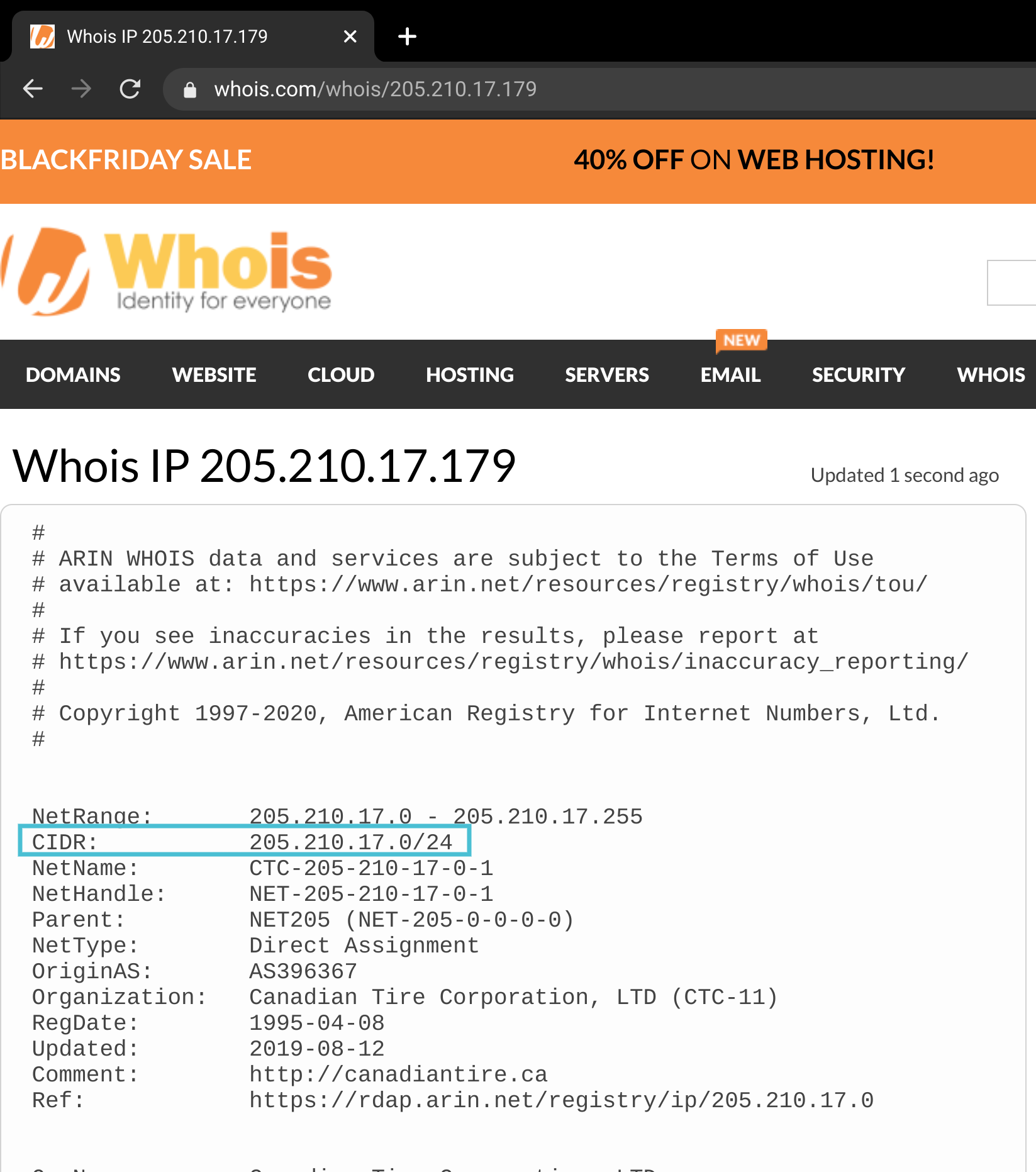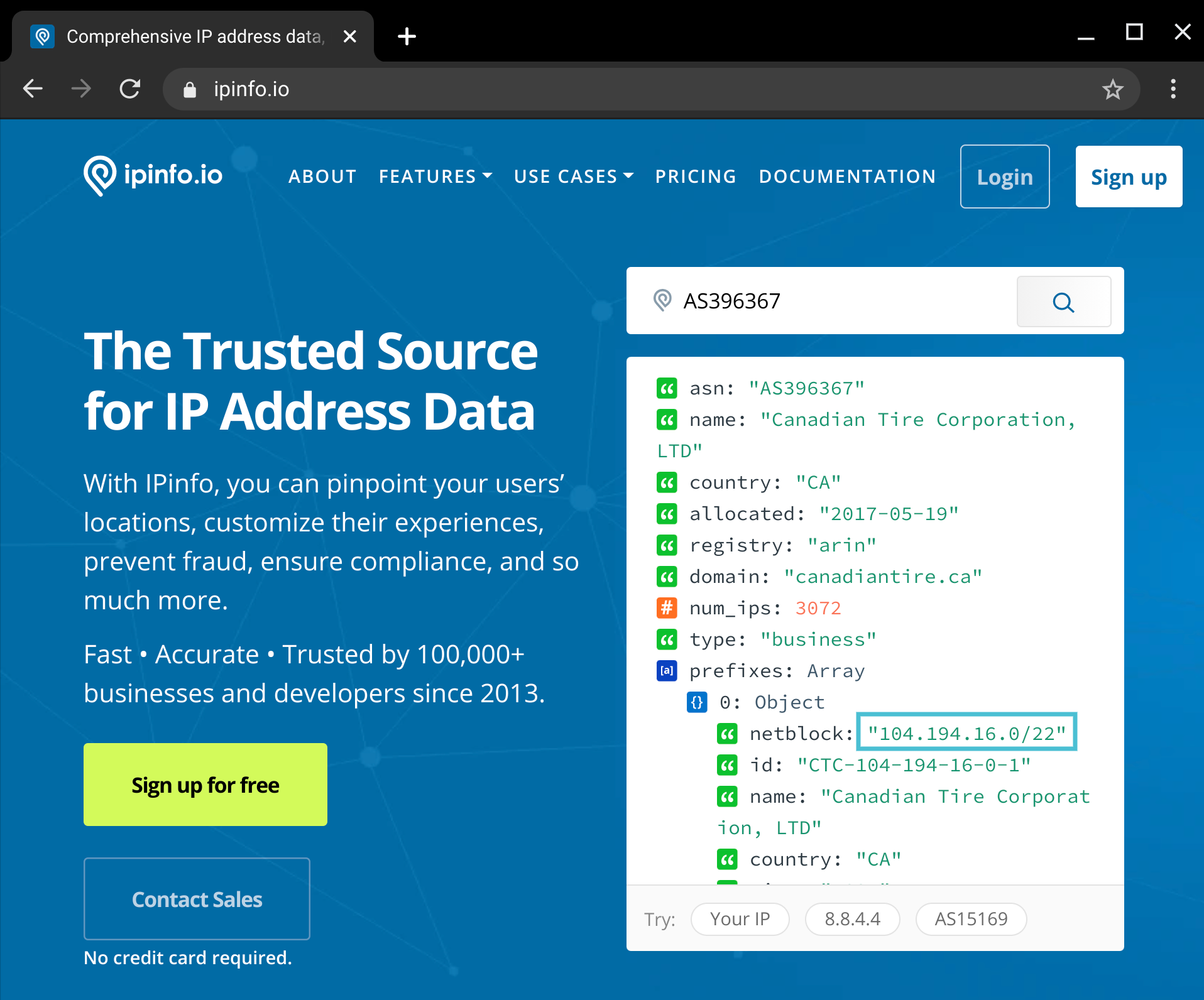Public URL Discovery
Discover your organizations public URLs
We will start with a single domain that you know of for your organization, and in the end, discover and capture a new set of other domains and URLs that are publicly available for your organization. The entire process should only take a couple of minutes and does not require any private network access.
Step 1
You can start with a top level domain that your company owns. For example, canadiantire.ca.
Analyze the domain with Tidal Tools. - tidal analyze web canadiantire.ca

Check if you own this domain. The organization name in the top right of the table states who owns it.
If you do own it, take a look at the AS number in the results and note down the IP address from the DNS A results.
In this case the IP address is 205.210.17.179 and the ASN is AS20940.
If you don’t own it, you can try analyzing another domain.
If you don’t own any domains directly yourself, you can skip to the last step here and try simply searching the domain name in the Public URLs search in Tidal.
Step 2
Go to https://whois.com/whois and search the IP you found above, in this case, 205.210.17.179.
From the results you should see a CIDR value, note this down. In this case it is 205.210.17.0/24

Step 3
Go to ipinfo.io and search for the AS number from above. Note down any CIDR ranges that are labelled as netblock ranges.
In this case the range is 104.194.16.0/22. There can be many netblock values listed here, in this case there is only 1.
If there are more you can note down all of them here.

Step 4
Go to your account on Tidal https://my_workspace.tidal.cloud/public-urls.
Enter the CIDR range you found above, from the whois command or any labelled as netblock from ipinfo.io.
In this case that is 104.194.16.0/22 and 205.210.17.0/24.

You should now see a list of domains that belong to your organization. With this list you can now continue your discovery by assigning them to applications within Tidal, either applications you already have identified or by creating new applications with these URLs as the initial data points.
Note: If the CIDR range you have found is very large (/16 larger) you can use a subnet viewer to break it into smaller ranges.